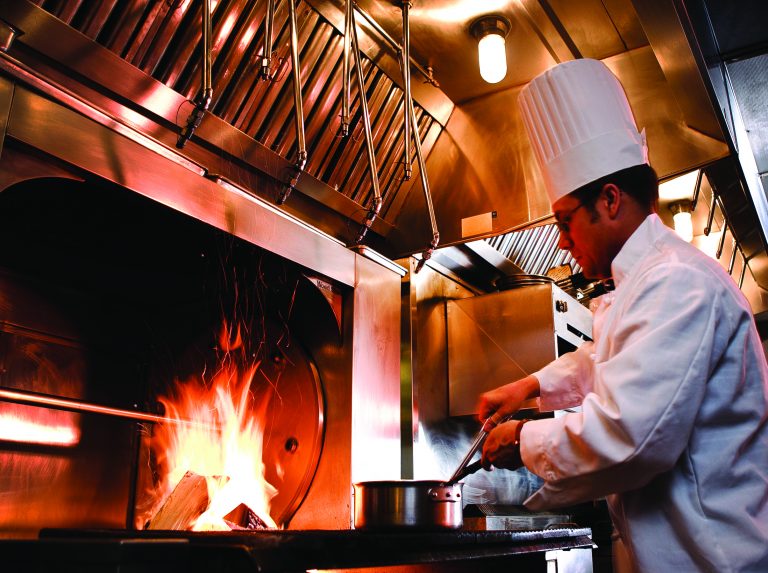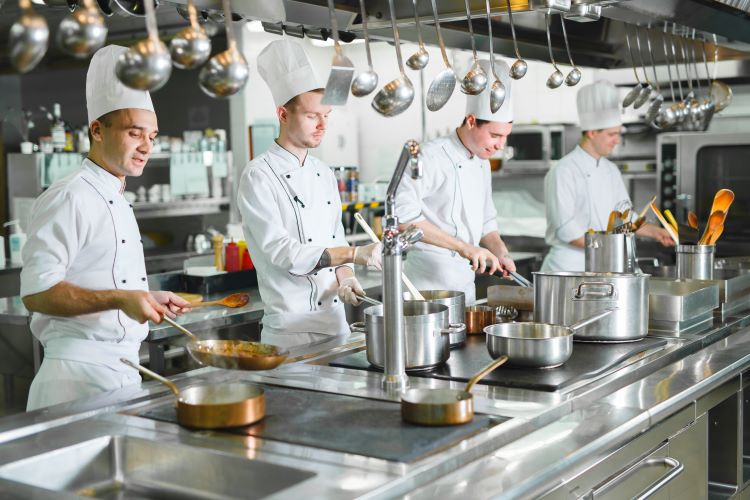DESIGN & INSTALLATION
Since 1946, Koorsen Fire & Security have been protecting restaurants, commercial kitchens, and food trucks from fire. A big part of protecting these kitchens is with installing fire suppression systems over the cooking appliances and inside the exhaust hood systems. We work with all of the major system manufacturers and can design and install a kitchen suppression system to meet your unique needs.


INSPECTION & TESTING
To keep the kitchen fire suppression systems working and ready in case of a fire, inspections are required every 6-months according to NFPA 17A. Our licensed technicians will complete a thorough inspection of your system to ensure everything is in working order and not damaged or obstructed from grease and smoke build-up.
KITCHEN HOOD FIRE SUPPRESSION FAQS
When someone manually activates the system or the system activates automatically via links or sensors, it shuts off the fuel source and dispenses a foam from the suppression nozzles, forming a “soapy blanket” and smothers the fire under the kitchen hood.
No. The kitchen fire suppression system is calibrated to protect the current equipment under the kitchen hood. However, if you want to move equipment, it is highly recommended to contact Koorsen first to ensure proper coverage.
It is a fire testing standard administered by the Underwriters Laboratories (UL). All kitchen fire suppression systems and components must be UL 300 approved.
Per NFPA 17A and manufacturer requirements, the restaurant suppression system must be inspected every 6-months.
PARTS OF A KITCHEN HOOD FIRE SUPPRESSION SYSTEM
Agent Storage Cylinder:
Cylinder or cylinders that contain the fire suppressant.
Manual Pull Station:
A mechanical lever that is pulled to trigger the fire suppressant manually.
Nozzles:
The ends of supply piping where the fire suppressant is dispersed.
Blow-Off Caps:
Rubber or metal caps covering the nozzle tips to prevent grease from plugging the nozzles.
Link Line:
Keeps fusible heat detection links in place in the hood and ductwork.
Fusible Links:
Heat-sensitive links that trigger fire suppression systems when a specific temperate is reached.
Automatic Fuel Shut-Off:
Shuts off the fuel supply when the fire suppressant system is activated.
Mechanical Release Module:
A springloaded device that releases the fire suppressant either automatically or manually by a remote manual pull station.

